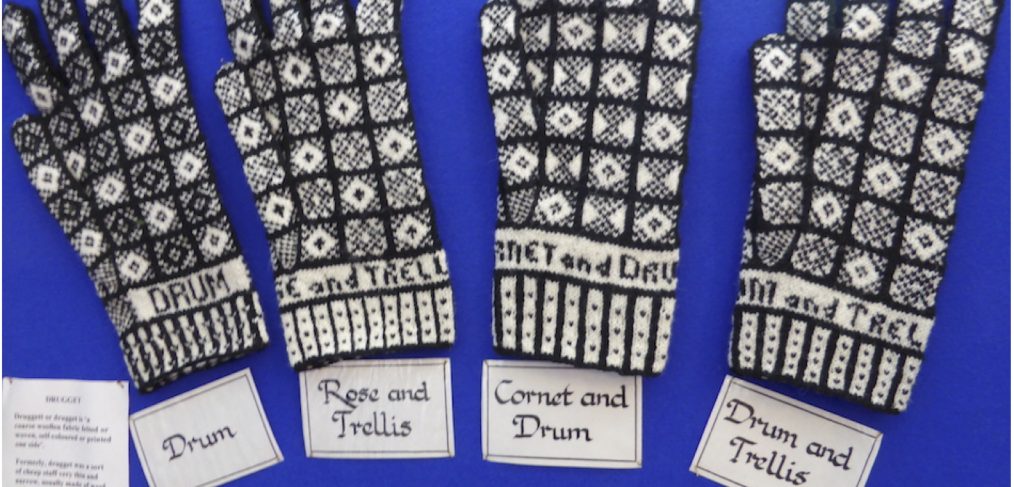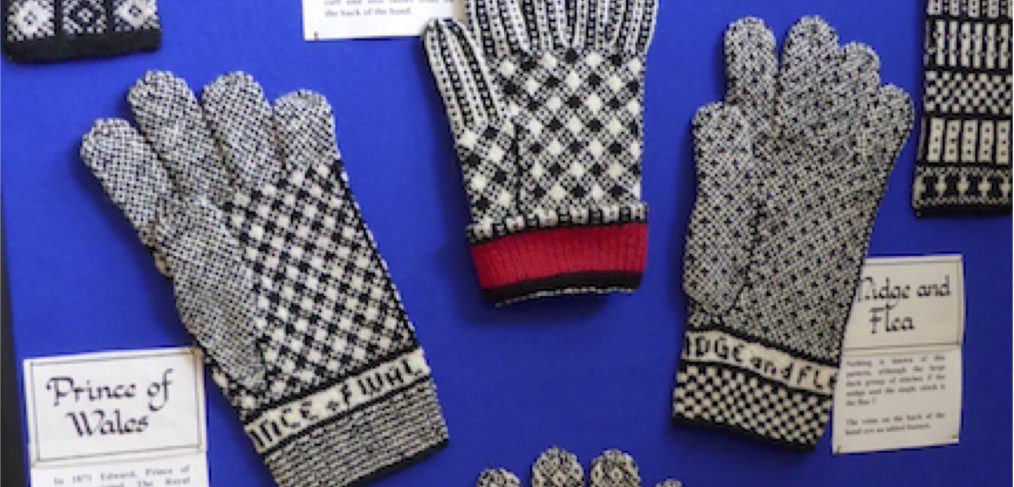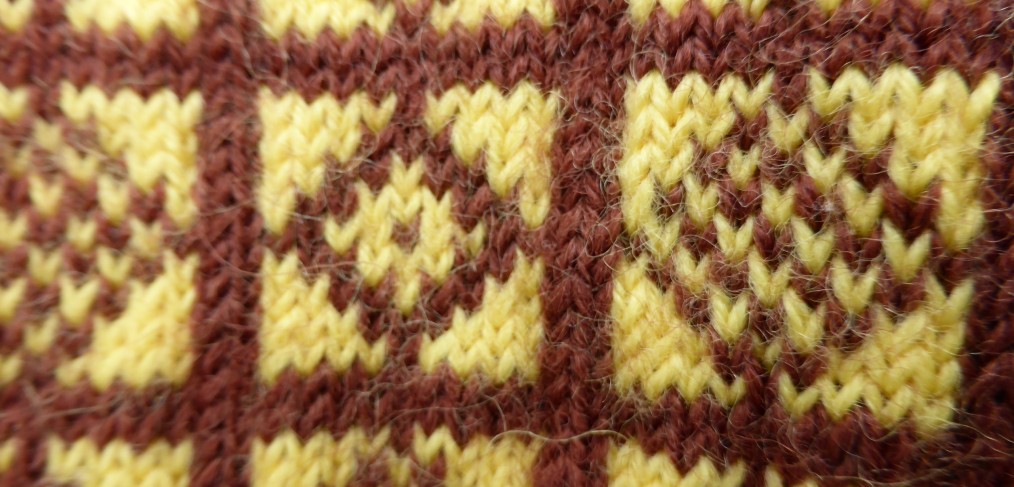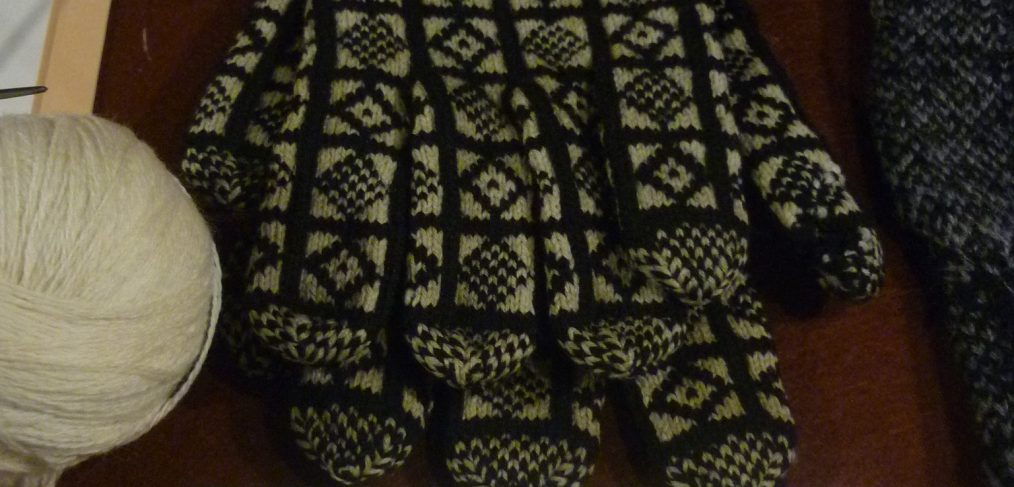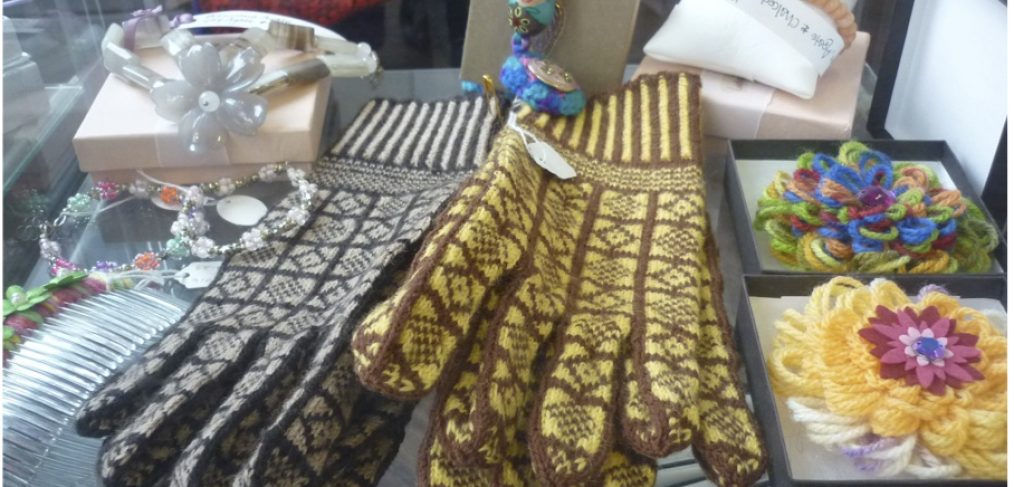As with many textiles, the exact history of these gloves and their patterns is difficult, if not impossible, to trace with certainty. The same few sources are quoted by most contemporary writers whose works appear in the bibliography at the end of this exhibit. 1
By way of introduction or brief explanatory note based on these commonly-referenced resources, from its height of activity in the eighteenth century, the hand knitting industry continued in the more remote areas of the British Isles as a means of generating income domestically, and this included the making of patterned gloves in two colours, of which very few original examples remain. Further complicating the issue, many of these early gloves are closer in type to Yorkshire rather than Sanquhar gloves.2 The two-colour patterns may have been used for knitting stockings in the Sanquhar area before the gloves developed. Perhaps because of its remote location, coupled with well-off visitors, glove knitting in the Sanquhar area continued through the nineteenth century, supported by orders from the local landowner, the Duke of Buccleuch. 3 In the twentieth century, Mary Forsyth, a teacher at the local high school, and a native of Sanquhar who returned to the town, reportedly ensured that all girls in the school knit a pair at the age of about fourteen, thus encouraging the continuation of glove knitting. This practice, combined with the wearing of the distinctive patterned gloves at the annual Riding of the Marches ceremony in Sanquhar, perhaps helped to ensure the continuation of the tradition.4 The complexity of the gloves, and the fact that almost every pair was personalized with the purchaser’s or recipient’s initials, also may have given the gloves status and cachet that contributed to their continued production.
Several authors have written about the history of glove knitting in Sanquhar, both in print and online. Please see the selection of references provided at the end of the exhibit.
1 Thomas Brown, The Union Gazetteer for Great Britain and Ireland, vol. 2. (Trengate, Glasgow: Niven, Napier & Khull, Printers, 1807), 900. Website.
2 These early gloves date from 1783 in the Fries Museum, Leeuwarden, Netherlands (item NO 06345), Website, from 1818, auctioned in January 2014 by Bonhams, Website; and the and the 1846 “George Walton” gloves in the Wordsworth Trust’s Museum in Grasmere, Cumbria, which are documented with pattern in Marie Hartley and Joan Ingilby. The Old Hand-Knitters of the Dales: With an Introduction to the Early History of Knitting, (1951; repr., Cleveland, OH: Cooperative Press, 2013), 140-181. Reproductions of that glove can be viewed on Ravelry. The gloves can also be found by going to the online collection of Ottema-Kingma Foundation in the Netherlands, Website. They are object NO 06345
3 Dumfries and Galloway Museums and Galleries On-line, “A History of the Sanquhar Knitting Pattern,” Website.
4 Ibid.

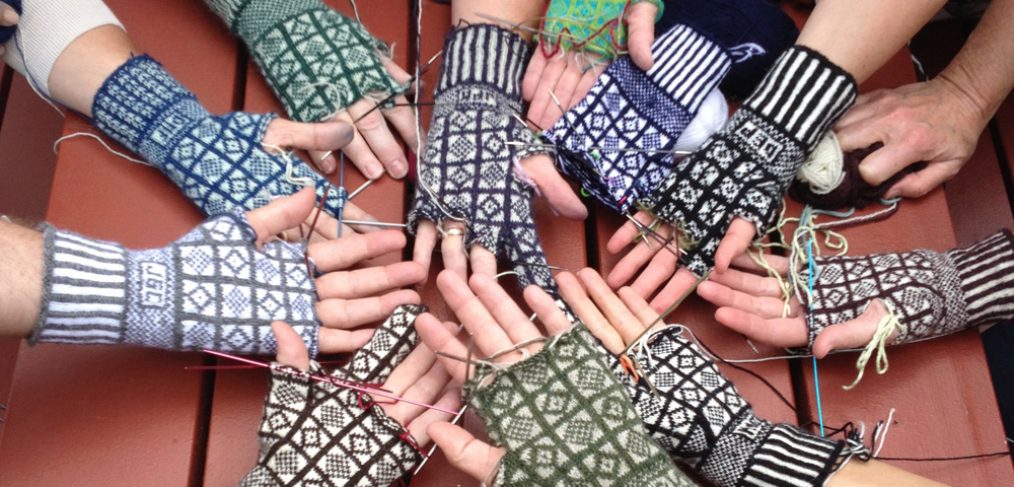
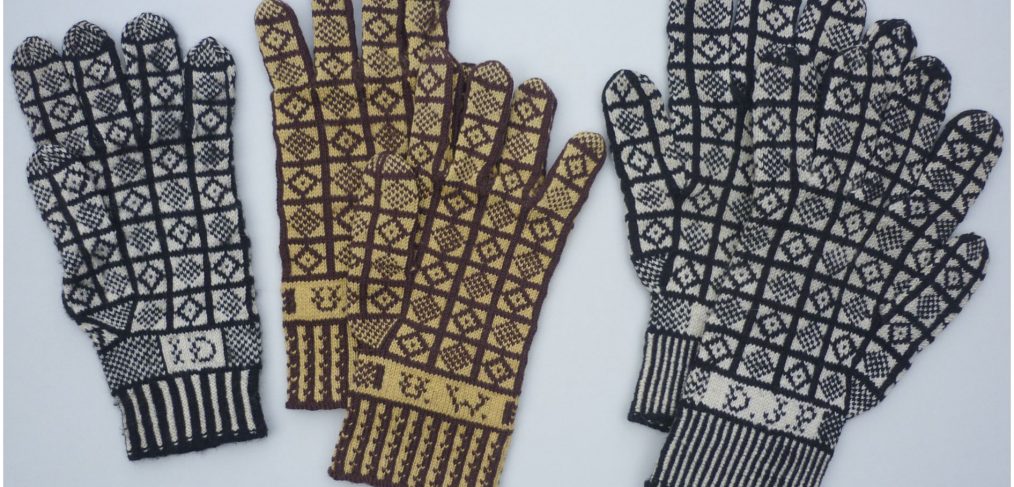
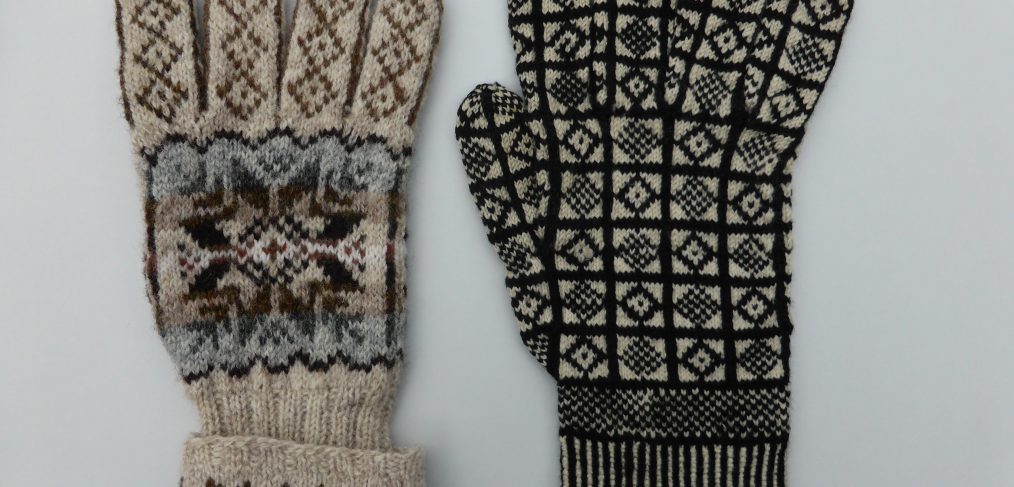

![Shetland glove with Sanquhar glove, palms. [Sanquhar glove, collection of KCG, UK. Shetland glove, collection of Angharad Thomas]. (Photo: Angharad Thomas)](https://sanquhargloves.centerforknitandcrochet.org/wp-content/uploads/2016/01/glove-864x250.jpg)
